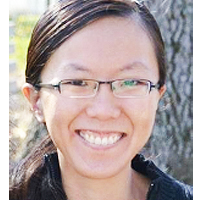Design and validation of an Index to predict the development of Hypertensive Cardiopathy
Published on: 16th February, 2018
OCLC Number/Unique Identifier: 7347023220
Introduction: The high morbidity and mortality by hypertensive cardiopathy demand the construction and validation of tools to stratify the risk of developing this condition.
Objective: To design and validate an index, based on risk factors, that permits to predict the development of hypertensive cardiopathy in patients with a diagnosis of essential arterial hypertension.
Methods: A prospective cohort study was done in hypertensive patients assisted at the specialized arterial hypertension physicians’ office of the “Carlos Manuel de Céspedes” Specialty Policlinic attached to the General University Hospital, Bayamo Municipality, Granma Province, Cuba from January 1st, 2010 to December 31, 2016. Internal and external validity and the internal consistency of the index were determined.
Results: The index sensitivity was of 97, 20 (IC: 93, 93-94.09) and specificity of 65, 38 (IC: 76, 25-76, 20). Both the index discriminative capacity (area under the ROC curve= 0,944; interval of confidence: 0.932-0.956; p<0.0005) and calibration (p=0.751) were adequate.
Conclusions: The present study proposes an index to predict the risk of developing hypertensive cardiopathy, with adequate discriminative capacity and calibration (external validity). The index can be used as a tool of clinical and epidemiological surveillance since it permits to identify subjects with greater probability of developing the condition and to stratify the risk.
Electrocardiographic criteria in founder mutations related to Arrhythmogenic cardiomyopathy
Published on: 2nd February, 2018
OCLC Number/Unique Identifier: 7347065911
Founder mutations are rare causes in arrhythmogenic cardiomyopathy including TMEM43 und phospholamban mutations. The incidence is approximately 1%. P.S358L TMEM43 mutations cause aggressive, in most cases biventricular arrhythmogenic cardiomyopathy [1], with the necessity of primary prophylactic ICD implantation in men and in women>30 years for sudden cardiac death prevention.
Heart disease new hypothesis: under endogenous toxicological aspect
Published on: 22nd January, 2018
OCLC Number/Unique Identifier: 7347022791
In order to suggest new pathogenetic hypothesis in some heart disease we think is interesting to observe some biomedical literature: Can we think some endogenus toxicologic movens in some heart pathologies?
Numerical Simulation of Thrombotic Occlusion in Tortuous Arterioles
Published on: 6th December, 2017
OCLC Number/Unique Identifier: 7666340975
Tortuous microvessels alter blood flow and stimulate thrombosis but the physical mechanisms are poorly understood. Both tortuous microvessels and abnormally large platelets are seen in diabetic patients. Thus, the objective of this study was to determine the physical effects of arteriole tortuosity and platelet size on the microscale processes of thrombotic occlusion in microvessels. A new lattice-Boltzmann method-based discrete element model was developed to simulate the fluid flow field with fluid-platelet coupling, platelet interactions, thrombus formation, and thrombotic occlusion in tortuous arterioles. Our results show that vessel tortuosity creates high shear stress zones that activate platelets and stimulate thrombus formation. The growth rate depends on the level of tortuosity and the pressure and flow boundary conditions. Once thrombi began to form, platelet collisions with thrombi and subsequent activations were more important than tortuosity level. Thrombus growth narrowed the channel and reduced the flow rate. Larger platelet size leads to quicker decrease of flow rate due to larger thrombi that occluded the arteriole. This study elucidated the important roles that tortuosity and platelet size play in thrombus formation and occlusion in arterioles.
Lipid-induced cardiovascular diseases
Published on: 23rd November, 2017
OCLC Number/Unique Identifier: 7666351562
Cardiovascular diseases are the leading cause of death worldwide. There are many evidences that the dysfunctioning lipotoxicity is the one of major factors of cardiovascular diseases such as, atherosclerosis, hypertension, and coronary heart disease. Obesity and diabetes increase circulating lipids that are likely with more generation of toxic intermediates, which leading to the complications associated with cardiovascular diseases. Indeed, lipotoxicity is a metabolic syndrome caused by abnormal lipid accumulation, which leads to cellular dysfunction and necrosis. Here we review the factors that induced pathogenesis of cardiovascular diseases by lipid accumulation and the mechanisms underlying the lipotoxicity.
Non-hemodynamic factors associated to the risk of developing hypertensive cardiopathy
Published on: 20th September, 2017
OCLC Number/Unique Identifier: 7286431107
Introduction: Hypertensive cardiopathy is the target organ lesion caused by arterial hypertension (HTN) that exhibits the highest morbidity and mortality rates. Although the importance of hemodynamic overload exerted by HTN on the onset of cardiopathy is well established, several non-hemodynamic factors may contribute significantly to its development.
Objective: To evaluate the influence of different non-hemodynamic risk factors in the development of hypertensive cardiopathy.
Methods: A prospective cohort study was carried out in hypertensive patients assisted at the specialized arterial hypertension physicians’ office of the “Carlos Manuel de Céspedes” Specialty Policlinic attached to the General University Hospital, Bayamo Municipality, Granma Province, Cuba from January 5, 2006 to December 31, 2015. The study included 18-to-55-year-old hypertensive patients with a stage 1 arterial hypertension diagnosis for less than a year1.
Results: The multivariate analysis showed a significant and independent relation among the majority of the factors studied and the risk of developing cardiopathy. The major factor was C-reactive protein (HR: 5.020; IC 95%: 3.383-7,448; p<0.005) followed by microalbuminuria (HR: 2.649; IC 95%: 1.932-3.631; p<0.005). The area under the model ROC curve was 0.887 (p<0,005).
Conclusions: The results showed that it is possible to estimate the risk of developing hypertensive cardiopathy with the application of the regression model to major risk factors.
A new heart: portraying the physiologic anatomo-functional reconstruction in ischemic cardiomyopathy
Published on: 15th September, 2017
OCLC Number/Unique Identifier: 7286353710
Fiber-based model of the left ventricle is known since 1628 but the complex 3D structure of myocardial fibers has not taken into account in normalcy or in disease until the last decade. We here present the case of a 60-year-old female patient affected by ischemic cardiomyopathy and severe left ventricular dysfunction. Left ventricle was reconstructed according to a novel surgical technique aimed at rebuilding an elliptical ventricular chamber and redirecting myocardial bundles of fibers in a near-normal orientation, by means of an original suturing technique. Left ventricular torsion was restored, proving the reorientation of myocardial fibres’ bundles. The restored physiologic shape was maintained along the years, gradually improving global ejection fraction and diastolic indices, showing a positive remodeling induced by the optimised geometrical and functional parameters.
The unexpected and never proven before renewal of ventricular torsion is an adjunctive element of ventricular efficiency, mainly in ventricles that work at a critical mechanics. A new fiber-based reading of heart function could improve clinical and functional outcomes and address some unsolved issues in the surgical treatment of ischemic cardiomyopathy as well as in medical approaches to the diseased myocardium.
Value of electrocardiographic T wave inversion in lead aVL in prediction of Mid Left Anterior Descending Stenosis in patients with stable Coronary Artery disease
Published on: 18th August, 2017
OCLC Number/Unique Identifier: 7286426390
Background: The electrocardiogram (ECG) is a simple and noninvasive bedside diagnostic tool with a well-established role in the diagnosis of coronary artery disease (CAD). We aimed to study the diagnostic value of electrocardiographic ST-T wave changes in lead aVL in prediction of site of coronary artery stenosis in patients with chronic stable angina.
Patients and Methods: study was conducted on 156 patients referred for invasive coronary angiography with history of stable CAD as proved by non- invasive tests, 12 lead ECG was recorded and fully interpreted with more focus on T wave direction in aVL lead. T waves in aVL were categorized into one of three groups: upright, flat or inverted.
Results: regarding T wave in lead aVL, inverted T wave was reported in 71(45.5%) patients, 58 (37.2%) patients were with upright T wave in lead aVL and 27(17.3%) patients were with flat T wave in lead aVL, and we found that inverted T wave in lead aVL was most evident in 56(73.7%) patients with mid LAD with (highest κ value equal to 0.550[moderate agreement], and p value<0.001.
Conclusions: This study confirmed the diagnostic value of T wave inversion in lead aVL in prediction of mid left anterior descending artery lesions in patients with stable coronary artery disease.
Subacute infectious endocarditis-associated membranoproliferative glomerular nephritis: A Case Report and Review
Published on: 17th August, 2017
OCLC Number/Unique Identifier: 7286354493
We experienced a case of membranoproliferative glomerulonephritis (MPGN) caused by subacute infectious endocarditis (SIE). A 57-year-old male farmer complained of fatigue, lack of appetite and gross haematuria for a month; he had no cough, chest pain, or exertion dyspnea. After admission, lab tests showed mild proteinuria(1.04g/d) and heavy dysmorphic red blood cells(RBC) (543/HP), with serum creatinine(Scr) slightly elevated(1.46mg/dl) and anemia(hemoglobin Hb 85g/L). A renal biopsy revealed MPGN lesion with 16.6% cellular crescents. The echocardiogram test revealed mitra valve prolapse with perforation of the anterior lobe, vegetation, and severe regurgitation. He was diagnosed as SIE induced MPGN. Then he underwent mitral valve replacement after systemic antibiotic treatment without immunosuppressive agents. Follow-up showed that he dramatically regained normal kidney function in total 1 year after the operation. Thus, antibiotic administration and valve replacement may be efficient enough for some of SIE induced MPGN. We did a brief review of the literature on SIE induced MPGN, which was sometimes misdiagnosed due to its silent characteristics; some SIE patients may initially have other organs involved.
A rare Congenital Coronary Artery Anomaly: Woven Right Coronary Artery associated with Myocardial Infarction
Published on: 7th July, 2017
OCLC Number/Unique Identifier: 7286355563
Woven coronary artery (WCA) is an extremely rare and still not a clearly defined coronary anomaly. It is characterized by the division of epicardial coronary artery into thin channels which then reanastomose with the distal part of the abnormal coronary artery [1]. Since the angiographic imaging of WCA looks like an intracoronary thrombus and dissection; the differential diagnosis between atherothrombotic coronary arteries with recanalization of organized thrombi in coronary arteries and WCA may be very difficult for invasive cardiologists, especially in patients with single or two coronary artery involvements [2].




